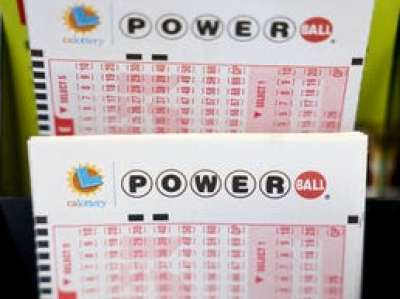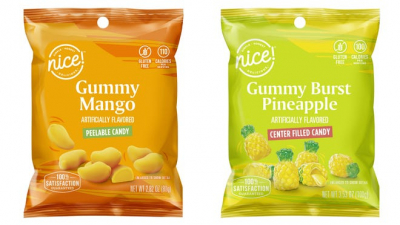

Deciphering the Cereal Conundrum: Navigating the Nutritional Minefield of Added Sugars in Popular Brands
In the bustling landscape of American breakfast choices, few staples rival the ubiquitous presence of cereal. From the whimsical allure of Lucky Charms to the timeless appeal of Frosted Flakes, brands like Kellogg and General Mills have ingrained themselves into our morning rituals with catchy slogans and colorful packaging. Google's data paint a vivid picture of our cereal preferences, showcasing a lineup that includes familiar names like Cheerios, Cinnamon Toast Crunch, and Froot Loops, among others.
Yet, amid the allure of these breakfast classics lies a nuanced reality: not all cereals are created equal in the realm of nutrition. While some boast healthful attributes, especially when paired with milk and wholesome toppings, others teeter on the edge of nutritional pitfalls. Nevertheless, the convenience and versatility of cereal remain undeniable. As a quick metabolic catalyst brimming with essential nutrients and energy, it offers a pragmatic solution for busy mornings.
Leslie Bonci, a seasoned sports dietitian, extols the virtues of cereal as a morning fuel, emphasizing its minimal preparation, affordability, and fiber-rich composition. Moreover, cereals serve as a reliable conduit for vital micronutrients and B vitamins, crucial elements often overlooked in the morning rush. Yet, the nutritional landscape of cereals is not monolithic. While some varieties boast whole grains and fiber, others languish in the realm of refined grains, lacking in essential nutrients and dietary fiber.
Kate Zeratsky, a registered dietitian at the esteemed Mayo Clinic, elucidates the distinction, cautioning against the allure of refined grain cereals and their diminished nutritional profiles. Amidst the breakfast quandary, one thing remains clear: the importance of starting the day with sustenance. Studies underscore the detrimental effects of skipping breakfast, underscoring the value of even a modest morning repast.
In the ever-evolving dialogue surrounding breakfast choices, the allure of cereal persists as a convenient, versatile option. While mindful selection is paramount, the potential for a nutritious start to the day is within reach, nestled amidst the colorful aisles of the breakfast aisle.
Navigating the Sweet Spot: Unraveling the Added Sugar Quandary in Breakfast Cereals
As the sun rises on breakfast tables across the nation, a silent menace lurks within the innocent confines of cereal bowls: added sugars. In the labyrinth of breakfast choices, where convenience meets taste, the allure of cereals often conceals a concerning truth – many popular brands harbor substantial amounts of added sugars.
According to guidelines from the U.S. Food and Drug Administration, the daily threshold for added sugars stands at 50 grams, equivalent to roughly 12 teaspoons, based on a 2,000-calorie diet. Yet, a single serving of certain cereals can catapult individuals perilously close to this limit. Post's Golden Crisp cereal, for example, crams a staggering 21 grams of added sugars into a mere cup, nearly half of an adult's daily allotment. The deceptive allure of a second bowl further compounds the issue, as unsuspecting consumers unknowingly exceed their sugar quotas.
While some may rationalize this sugar surge as a permissible indulgence, others pause to contemplate its implications. Kate Zeratsky suggests a moment of reflection: is the morning cereal bowl the optimal vessel for one's sugar fix, or might there be better alternatives?
Furthermore, while children often find themselves ensnared in the crosshairs of cereal marketing campaigns, their sugar thresholds remain substantially lower. Leslie Bonci underscores this incongruity, noting that the recommended daily intake of added sugars for children stands at a modest 6 teaspoons, or about 25 grams.
Amidst this sugary labyrinth, discerning consumers seek solace in the sanctuary of nutrition labels. Leslie Bonci advises a vigilant scrutiny of these labels, urging families to prioritize cereals boasting essential vitamins and minerals while treading lightly on the sugar front.
Enter Cheerios, a beacon of nutritional fortitude amidst the sugary seas, offering a modest 1 gram of added sugars per serving alongside a bounty of vital nutrients. Rice Krispies, too, emerge as a stalwart ally, with a paltry 4 grams of added sugars and a cornucopia of wholesome ingredients.
For those in pursuit of fiber-rich fare, a host of options beckon. From Grape Nuts to Shredded Wheat, these cereals stand as paragons of dietary virtue, offering a harmonious blend of nutrition and taste.
However, the sugar-laden siren song of certain brands continues to beckon, tempting palates with a potent blend of sweetness and nostalgia. Honey Smacks, Frosted Flakes, and their brethren entice with their sugary allure, promising a gustatory voyage tinged with sweetness and regret.
In the labyrinth of breakfast choices, where convenience and nutrition collide, the quest for the perfect cereal remains an ongoing saga. Yet, armed with knowledge and discernment, consumers navigate this treacherous terrain, striving to strike a delicate balance between taste and health.
In the labyrinth of cereal aisles, where choices abound and nutritional pitfalls lurk, Kate Zeratsky offers a guiding beacon: prioritize cereals adorned with single-digit added sugars, for in their modest sweetness lies a promise of nutritional prudence. With a keen eye on essential nutrients, she advocates for brands that embrace the bounty of whole grains, heralding them as stalwart allies in the quest for balanced breakfasts.
Opt for cereals adorned with single-digit added sugars – the lower, the better," Zeratsky advises, her words echoing amidst the cacophony of colorful boxes. Beyond the allure of sweetness, she champions cereals rich in essential nutrients, urging consumers to seek out beacons of wholesomeness amidst the sugar-laden sea.
Embracing the nutritive prowess of whole grains, Zeratsky extols their virtues as bastions of fiber and complex carbohydrates. "Whole grains offer a double-edged sword of nutritional excellence," she explains, "combining the satiating power of fiber with the sustained energy release of complex carbohydrates." In this harmonious union, she envisions a breakfast symphony, orchestrating a symphony of sustained vitality amidst the morning rush.
As consumers navigate the labyrinthine aisles of cereal choices, Zeratsky's words serve as a steadfast compass, guiding them towards nutritional enlightenment amidst the tempting allure of sweetness. Armed with knowledge and discernment, they embark on a quest for cereals that nourish both body and soul, forging a path towards a breakfast tableau defined by balance and vitality.
In the kaleidoscope of breakfast choices, the quest for the perfect cereal emerges as a journey of discernment and enlightenment. Guided by the wisdom of Kate Zeratsky, consumers navigate the labyrinthine aisles with newfound clarity, embracing cereals adorned with single-digit added sugars and fortified with essential nutrients. As they heed her counsel and embrace the nourishing embrace of whole grains, they embark on a voyage towards breakfast bliss—a symphony of sustained vitality and nutritional excellence. In this pursuit of balance and wellness, they find not just sustenance, but a testament to the transformative power of informed choice in shaping a healthier tomorrow.








